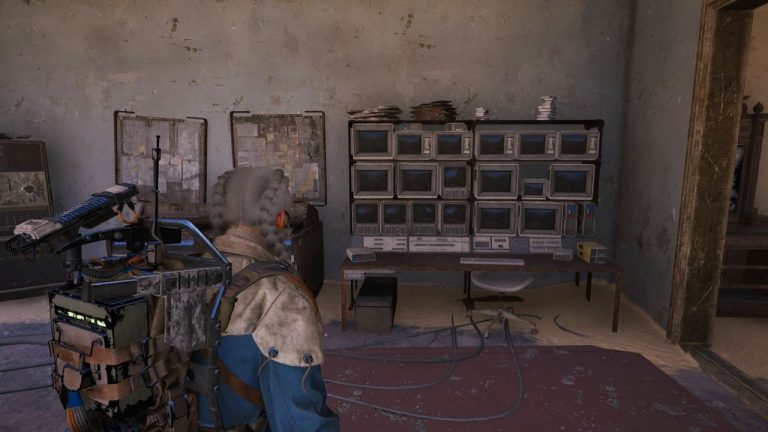Best Chess Openings for Beginners: The Royal Game’s Critical First Steps
Hey there, chess enthusiasts and future grandmasters! Are you ready to embark on a thrilling voyage into the kingdom of chess? As you may already know, chess is not just a game of tactical skirmishes and strategic wars, it’s a dance of the intellect, a duel of minds. Every move counts, but those made at the beginning — the opening moves — can set the tone for the entire game.
A robust opening can provide you with a stable foundation, dictating the pace and potentially forcing your opponent to play defense right from the start. It’s no exaggeration to say that a game of chess can be won or lost just on those first few crucial maneuvers. The magic of the opening lies in preparing your forces for the clash to come and safeguarding your king from unforeseen threats.
So if you’re someone looking to step up your game or even just grasp how the chess masters weave their opening spells, hang tight! We’re going to break down the best chess openings for beginners, teach you the principles that guide these early decisions, and arm you with the knowledge to march confidently into battle, ready for any gambit.
Let’s make sure those first moves are not only good, but great. After all, in chess, as in life, a strong start can lead you down the path to a magnificent triumph!
Understanding Chess Openings
Before we dive into the details of individual openings, let’s take a step back and understand the ‘why’ behind these series of moves that we collectively refer to as “chess openings.” Whether you’re maneuvering a knight or sliding a bishop, every decision at the start of the chess game is part of a larger plan—one that’s been refined over centuries of chess play.
Chess openings are the first chapter of your strategic story. They’re about setting up key pieces in strong positions, fighting for control of the board, and establishing your presence as you enter the middlegame. Each opening move is not random but is carefully crafted to contribute to a cohesive battle strategy that plays out over the course of the game.
Not only do openings affect the conflict to come, but they can also sow the seeds of success (or disaster) early on. Properly executed, they build up a position that’s poised for offensive maneuvers or one that’s fortified against oncoming threats.
The objectives of chess openings are mostly uniform across various styles of play, and they include:
Dominating the board’s center: The central squares are the heart of the battlefield, offering maximum mobility and influence.
Rapid development: Bringing out your pieces from their starting squares quickly and efficiently is crucial. After all, a piece not in play is a piece not contributing to your position.
Safeguarding your king: An early checkmate ends the game regardless of how superior your other positions may be. Thus, ensuring your king’s safety through maneuvers like castling is imperative.
Creating a pawn structure that supports your overall strategy: Pawns are the soul of the game, and their configuration can strengthen your play or lead to vulnerabilities.
To understand and communicate chess openings properly, you’ll need to be familiar with chess notation—the shorthand language that records the moves in a game. This simple system uses letters and numbers to denote pieces and squares, making it easy to share and study openings. For example, “e4” means moving a pawn to the square e4, while “Nf3” signals a knight move to the square f3.
This shorthand is your ticket to unlocking vast libraries of chess wisdom, where countless opening moves have been cataloged and analyzed. So as we walk through the specifics of some ideal beginner openings, we’ll be using this notation to guide you every step of the way.
Ready to take control of the board from the get-go? Excellent! Let’s put these conceptual ideas into practice and check out our first opening.
The Italian Game – A Classic Opening for Beginners
Embark on a chess journey that starts in the heart of Italy! The Italian Game is a storied chess opening that dates back centuries and remains a fantastic choice for beginners. Its straightforward goals mirror our cherished principles: control the center, develop your pieces, protect your king, and maintain a sturdy pawn structure. Let’s walk through the enchanted dance of the Italian Game.
Step-by-Step Guide on How to Execute the Italian Game
In the world of chess openings, the Italian Game begins with the magical incantation of 1.e4 e5 2.Nf3 Nc6 3.Bc4. Here’s the spellbinding sequence in common tongue:
e4 – You start by moving your king’s pawn two squares forward, seizing control of the center.
e5 – The opponent mirrors your pawn move, holding their ground in the center.
Nf3 – Develop your knight towards the center, where it eyes the e5 pawn and invites further action.
Nc6 – The adversary summons their knight to defend their pawn and match your development.
Bc4 – Now, deploy your bishop to c4, where it targets the vulnerable f7 square, the soft spot in your opponent’s pawn armor.
With these moves, you have a royal party in the center: a pawn duo, a knight bravely forward, and a bishop eyeing crucial squares. Now you’re ready to pounce or parry with poise!
Tactical Objectives and Potential Variations Within the Italian Game
This setup gives you many magical paths to explore. You can castle swiftly, securing your king into safety while your rook slides over for potential action. Your knights are ready to hop into commanding posts, and your bishops can become long-range snipers.
But beware, for every spell has its counter spell. Your opponent may employ the Two Knights Defense, a knightly charge with …Nf6, challenging your dominance, or the Hungarian Defense, …Be7, a more passive shield.
Overall, the Italian Game teaches the fundamentals while granting you flexibility to weave your strategic web. Embrace this opening, and you’ll be crafting tales of chess conquest and intrigue worthy of the grandmasters of yore.
The Sicilian Defense – Turning the Tables
All hail the Sicilian Defense, the defender of the underdogs and power to the pawns! This reputable opening is a counter-attacking favorite among chess players across the globe. As you might have guessed, it doesn’t hail from the Italian peninsula, but rather from the rugged and beautiful island of Sicily. Just like its namesake, the Sicilian Defense is feisty, resourceful, and can take your opponent by surprise.
Introduction to the Sicilian Defense and why it’s beneficial for beginners
When your opponent starts with 1.e4, seizing the center, you respond with 1…c5, stepping sideways into the Sicilian Defense. Instead of directly mirroring your opponent’s pawn structure, you’re allowing yourself to build a counter-attacking bastion. The Sicilian confounds many with its asymmetrical pawn structure and can lead to highly dynamic play. As an adventurous beginner, this opening ignites your strategic passions, equipping you with a powerful set-up that balances safety and aggression.
Key Moves, Responses, and Themes in the Sicilian Defense
Here’s what a Sicilian spellcasting might look like:
e4 – The opponent forges ahead, staking their claim in the center.
c5 – You make a daring advance with your c-pawn, eyeballing the d4 square and opening lines for your queen and knights.
The Sicilian Defense mutates into various flavorful variations — the Dragon, the Najdorf, and the Accelerated Dragon being some. Each variation has its unique twist and strategic nuances, but at their core, they all share the Sicilian spirit of striking back from the shadows of the flank, rather than the open grounds of the center.
What happens next can be bewildering — a flurry of pawn pushes and piece developments, each with the intent to outfox the other. Your d6 pawn can support e5, challenging the central powers. Your knights spring into action like leopards leaping towards the light squares. Your g-pawn might even lurch forward to g6, giving your fianchettoed bishop a diagonal as sharp as a sorcerer’s gaze.
As you wade through the Sicilian waters, remember to sprinkle in the principles we’ve discussed. Develop your pieces with tenacity, keep an eye on the central squares, secure your king behind a veil of pawns, and maintain a web of pawns that trip up the enemy’s advance.
Young chess adepts, the Sicilian Defense is your riddle wrapped in a mystery inside an enigma. It’s a citrusy gambit that will tantalize your taste for tactical wizardry, but remember to practice its permutations, for within them lie hidden checkmates and trump cards aplenty.
The French Defense – Building a Strong Foundation
Don your beret and say “Bonjour” to the French Defense, a strategic gambit as robust as a fine Bordeaux. This opening is marked by its solid pawn structure and a deliberate blockade that takes patience and finesse to navigate successfully. It’s a toast to the beginner who values a snug, safe king and a strong, steadfast formation.
Overview of the French Defense and its solid structure
The French Defense materializes when you opt for a stoic response to your opponent’s e4 move. By marching your e6 pawn forward, you begin to weave a tapestry of pawns and pieces that can absorb the pressure and lash out with lethal precision. Here’s how the opening duet often plays out:
e4 – Your opponent steps into the center with confidence, as if declaring, “This is my realm.”
e6 – You counter with quiet defiance, hinting at a pawn chain that will be the backbone of your defense.
This opening might appear timid, but it is a fortress with a hidden staircase. It conserves energy while preparing to unleash its counter-attack. There’s an elegance to the French Defense; its balletic moves are a slow dance of provocation and retort.
Common strategies and sample moves for starting the French Defense
Whether you pursue the Advance variation with an aggressive d4 – e5 pawn push, the Classical with Nf6 developing your knight to challenge e4, or the Winawer with Bb4 pinning your bishop to unsettle your opponent’s knight, the French Defense is a diverse battlefield.
As you broaden your opening repertoire, the French Defense becomes an anchor. It teaches you the art of the counter-attack and imbues you with patience. The strategies it incubates are manifold:
Advance Variation (1.e4 e6 2.d4 d5 3.e5): Here, you’ll muster your forces behind your pawn walls, itching to strike a blow to your opponent’s center.
Exchange Variation (1.e4 e6 2.d4 d5 3.exd5 exd5): You exchange pawns in the center, opening lines for your pieces while still fortifying your position.
Tarrasch Variation (1.e4 e6 2.d4 d5 3.Nd2): With your knight backing up your pawns, you shape a subtle yet powerful reply to your opponent’s moves.
Every maneuver within the French has gravity and grace, and your job is to both predict and precipitate transitions, turning your stony fort into a surging river that sweeps the board.
The Ruy López – A Path to Sophisticated Play
Hark! The Ruy López beckons like a grand cathedral of chess strategy — soaring, storied, and strategically rich. Named after a 16th-century Spanish priest who penned some of the first illuminated manuscripts of chess wisdom, the Ruy López is a royal road that has been trodden by beginners and chess sages alike, promising a sojourn of strategic growth and positional understanding.
History of the Ruy López and why it’s revered by beginners and masters
The opening plays out like a classic ode, beginning with the e4 pawn move by White, mirrored by the e5 pawn reply by Black, and followed by the knight’s journey to f3 and the knight’s challenge c6. It is here that the signature of the Ruy López is revealed, the bishop’s sortie to b5. This move puts pressure on the knight that’s defending e5, and it has the scent of royalty, of battles in sun-baked plazas.
e4 e5
Nf3 Nc6
Bb5
These moves are the overture, setting the stage for a game rich with thematic motifs.
Initial Moves and Strategic Plans in the Ruy López
The central tenets of the Ruy López align harmoniously with the key principles we explored earlier. By pushing the e4 pawn, developing the knight, and advancing the bishop to b5, you embrace control, development, and a veiled threat to your opponent’s pawn structure. The Ruy López can quickly coalesce into a tango where each player must be mindful of the tension and tempo.
How to Respond to Common Counters and Transitions to the Mid-Game
Even though the opening is ancient, every match is like a fresh stream carving new paths through the landscape. Black may choose to break the tension early with the Exchange variation, capturing on c6, or could opt for the Morphy Defense with …a6, nudging your bishop to decide on its path. Each decision branches out like the limbs of an old oak tree, leading to an intricate overstory above a game’s roots sunk deep in strategy.
The Ruy López teaches more than just opening moves; it’s a guide to chess philosophy, instructing you in the ways of maneuvering, of positional play, and of the ebb and flow of attack and defense. As you partake in its rich and rewarding narrative, you learn that every piece has its role, every move a purpose.
The appeal of the Ruy López to both neophytes and seasoned veterans lies in its incisive simplicity and potential complexity. It’s a landscape where every square is a story and every story is a lesson in the art of chess.
Conclusion: Launching a Successful Chess Adventure
As we reach the end of our journey through the enchanted realm of chess openings, it’s clear that each move, each strategy, each opening is more than just a series of steps. They’re the brushstrokes on the canvas of your chess legacy, the opening notes in a symphony of strategy. You now stand before a grand tapestry woven with threads of Italian precision, Sicilian dynamism, French fortitude, and Spanish complexity.
Summary of the Importance of Mastering Fundamental Openings
Understanding these openings and the principles that underpin them is like holding a key to vast secret libraries. It’s not merely about memorizing moves; it’s about grasping their purpose, their soul. When you adopt the Italian Game, you embrace balance. The Sicilian Defense bestows upon you the gift of counter-attack. The French Defense teaches resilience, while the Ruy López offers a wealth of classical knowledge.
These openings are your magical incantations, ready to be cast in the opening phases of your battles. They are the foundations upon which you can build victories and learn from defeats, and they are essential to navigating the chessboard with confidence and finesse.
Encouragement to Practice and Experiment with Different Openings
As with any skill worth its salt, mastery only comes with practice. Experiment with each opening in friendly skirmishes and serious duels alike. Feel the rhythm of their patterns and the tempo of their tactics. Do not fear mistakes, for they are but stepping stones to greatness. The more you play, the more you embody the spirit and wisdom of each opening.
Every game is an opportunity to breathe life into these ancient formations, to leave your own mark on the hallowed grounds of chess history. Let your curiosity guide you to play both sides of the board – etch your victories with White and Black with the same hand, and learn the dualities of defense and attack from every angle.
Final Thoughts on the Lifelong Journey of Chess Improvement
Lastly, remember that the pursuit of chess excellence is a lifelong quest, an odyssey that stretches far beyond the horizon. The openings you’ve encountered here are just the trailhead into a forest brimming with secrets waiting to be uncovered. Each game, each opponent, teaches you something new about chess, about strategy, and perhaps, even about yourself.
Now, armed with these openings and principles, you are ready to enter the fray. May your moves be shrewd, your plans be sound, and your love for the game grow with every click of the clock. Venture forth, brave chess explorer! Your adventure has just begun, and the board is wide and inviting.
Journey well, think deeply, and always remember — in the grand game of chess, every opening move matters. Checkmate awaits those who are bold enough to seek it. Enjoy the game!
The post Opening Moves: Master the Best Chess Openings for Beginners appeared first on LitRPG Reads.












